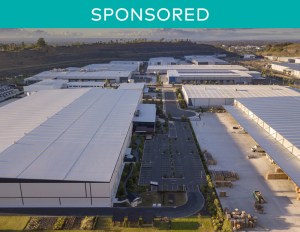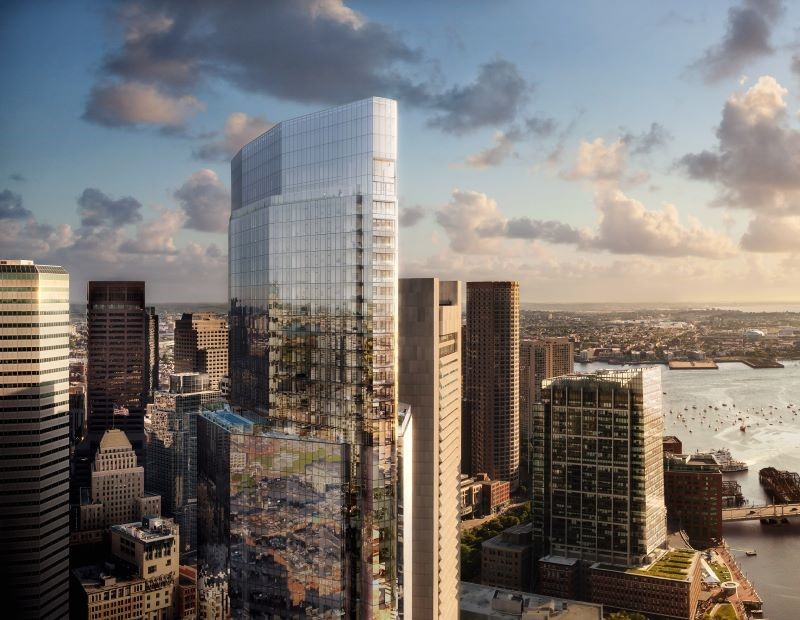Frank Crivello on What’s Next for Industrial Real Estate
Though demand will remain stable in 2023, there will be some changes.
 Industrial real estate has experienced a wild ride in the U.S. ever since the global COVID-19 pandemic caused a rush on warehouses to support an e-commerce boom and factories to accommodate supply chain resiliency efforts. As a result, the sector led the pack in commercial real estate (CRE), with investors scrambling to acquire in-demand assets and prospective tenants searching desperately for viable space.
Industrial real estate has experienced a wild ride in the U.S. ever since the global COVID-19 pandemic caused a rush on warehouses to support an e-commerce boom and factories to accommodate supply chain resiliency efforts. As a result, the sector led the pack in commercial real estate (CRE), with investors scrambling to acquire in-demand assets and prospective tenants searching desperately for viable space.
However, the latter half of 2022 brought predictions of economic uncertainty and recession, as well as falling consumer demand. Though industrial rode out the volatility of the pandemic, some experts feared that economic conditions would keep landlords from being able to raise rents.
With 2022 quickly coming to a close, industrial real estate stakeholders are asking: what’s next for industrial real estate? In this industry update, we’ll explore the state of the sector and address some of the concerns expressed around boardroom tables and in the media.
Slowdown Schmo-down
First and foremost, recent fears about an industrial slowdown are exaggerated. Is there a notable slowdown in industrial activity as the year winds down? Yes, there is. However, the context of this drawback in activity is often left out of the discussion.
Remember that industrial real estate is coming off two years of unprecedented demand fueled by the COVID-19 outbreak. However, as the world learns to manage the virus, the contributing factors that drove the massive shift to e-commerce have begun to have less impact. For example, in early 2022, some landlords attempted to delay deals with tenants because rents were rising so fast that waiting a few weeks ensured a better deal for the property owner.
That level of rampant activity isn’t sustainable for the long term in any sector, so it’s only natural that things have begun to change. So yes, while leasing and purchasing numbers may be drifting downward, that’s only because they’re being unfairly compared to last year’s numbers, which were artificially inflated by the pandemic and setting records.
At the end of Q3 2022, net industrial absorption was approximately 425 million square feet on the year, still well above the 366.5 million square feet during this same period in 2021. However, compare 2022’s numbers with pre-pandemic numbers at the end of Q3 2019, when overall net absorption didn’t even break 170 million square feet. That context makes it obvious that the sector is doing just fine, even if some indicators have begun to show signs of slowing.
Industrial Real Estate Demand in 2023
Industrial real estate will undoubtedly continue its resilience through 2023 and remain a leader in CRE. The following factors support this prediction:
- Low vacancy. Industrial vacancy remains under 5 percent in most parts of the United States and is even less in port-adjacent markets. Despite waning consumer spending and predictions of a lackluster peak season turnout by consumers, demand for e-commerce and omnichannel fulfillment space still far outpaces supply. Until supply and demand begin to balance, industrial should remain relatively safe from economic volatility.
- Supply chain restructuring. U.S. companies will continue efforts to shorten supply chains by reshoring production assets and sourcing domestic suppliers. Rising demand for reliable, U.S.-produced goods will continue to act as a boon for industrial real estate.
- Federal investment. The Inflation Reduction Act provides significant resources for the green manufacturing sector. As established companies and start-ups pursue government funding to produce renewable energy solutions, electric vehicles, batteries, microchips, and other eligible goods, they will require suitable advanced manufacturing space.
Though demand will remain stable in 2023, there will be some changes. For example, rising inflation has impacted the availability of funding for speculative projects. As such, spec construction will most likely grind to a stop in 2023. Furthermore, landlords may see rents finally stabilize early in the year as tenants take longer to enter into agreements, and the economy makes them hesitant to commit to high leasing costs. All in all, however, industry stakeholders can rest assured that industrial will remain one of the strongest real estate asset classes throughout the year.
About Phoenix Investors
Founded by Frank P. Crivello in 1994, Phoenix Investors and its affiliates (collectively “Phoenix”) are a leader in the acquisition, development, renovation, and repositioning of industrial facilities throughout the United States. Utilizing a disciplined investment approach and successful partnerships with institutional capital sources, corporations and public stakeholders, Phoenix has developed a proven track record of generating superior risk adjusted returns, while providing cost-efficient lease rates for its growing portfolio of national tenants. Its efforts inspire and drive the transformation and reinvigoration of the economic engines in the communities it serves. Phoenix continues to be defined by thoughtful relationships, sophisticated investment tools, cost efficient solutions, and a reputation for success.







You must be logged in to post a comment.